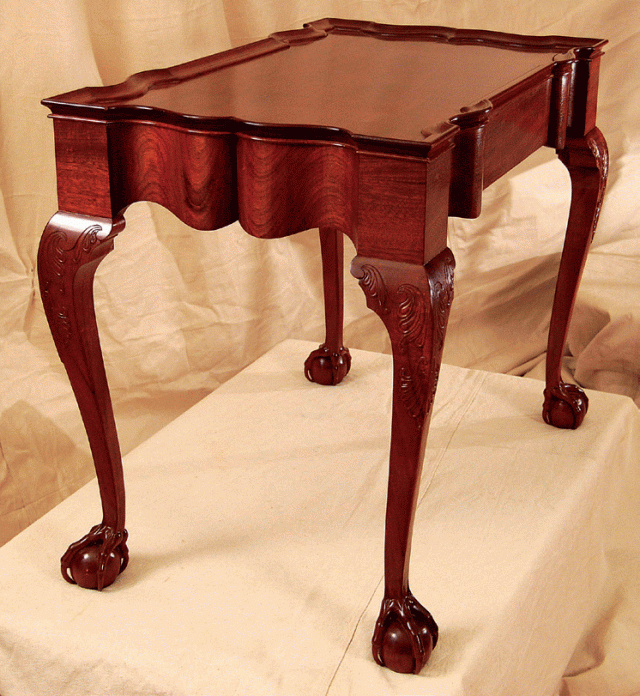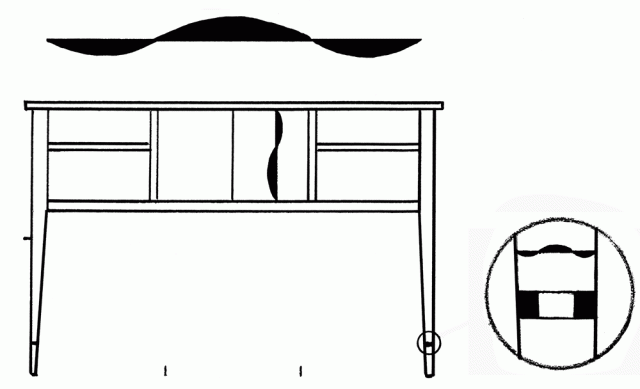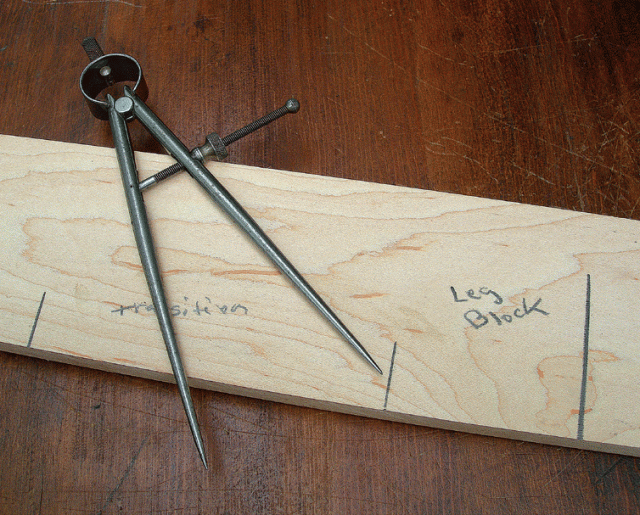
This is an excerpt from “By Hand and Eye” by Geo. R. Walker and Jim Tolpin.
Afternoon sunlight streamed across the wide pine flooring and up over a small Newport table. I turned my head and paused a moment, taking in the glow of the red mahogany top. With a pencil and a clean strip of pine to act as a story stick, I carefully nudged the small board against the table apron and began recording transition points, marking carefully where each element stopped and started.
This Newport table made by Al Breed is an exact reproduction of one of the true masterpieces of American craft. Originals sell in the seven-figure range, and this was as close as I might hope to get with a sharp set of dividers in my hands (museums tend to frown on that). My aim wasn’t to record the table’s dimensions to make detailed plans. Instead, I searched for a hidden song or harmony woven in the form, hidden in plain sight. I’d often read about the mindset of pre-industrial designers, how they loved to play with proportions and create frozen music in built objects, and I wondered if this table might contain a song. Sound far-fetched? Since antiquity, designers understood that a small handful of simple ratios had a correlation with our musical scale. They spoke a design language built around simple whole-number proportions and applied them to a wide range of designs, from a tiny salt shaker to the entire layout of a city, and everything in between, including furniture.

With a square, each tick mark became a line on my story stick, transforming it into a map I could explore with dividers. My hands paced the divider points back and forth, adjusting the tool again and again, crisscrossing and retracing my steps. Then it happened. Like taking a pencil rubbing on the carved face of a weathered tombstone, a small series of overlapping notes appeared, running across the apron supporting the top: octave, fifth, fourth, fifth, octave.
Not some grand symphony meant for a cathedral, just a subtle cello or flute piece with a few notes and a quiet rhythm. I’d been “looking” at that table for days but now I was “seeing” it. As I walked around it, the frozen music stood out clearly to my eyes. It was a moment of clarity, like when you spot a familiar landmark and the feeling of being lost vanishes. It also was a moment of connection, a rare glimpse into the artisan age. Connection, after all, is what design is all about: building things that connect and ring true. I want to be careful here and not romanticize this. It’s not about going back in time and idealizing another age or being awestruck by period styles that were once the height of fashion. It’s about drawing from our rich legacy of woodcraft to see what it offers the modern woodworker. That’s the string that pulled Jim Tolpin and me together and got us so excited about what we call “artisan age design.” Both of us marvel at the sheer simplicity of it, how it flows from hand and eye intuitively.

This is a gateway into a design language practiced in small cabinetmaking shops prior to the mid-19th century (though there are hints that it may have survived into the early 20th century). Lessons from that artisan age are still powerful and relevant because they are intuitive to our core. Do you remember when you first learned to sing as a child? Admit it, none of us can. It was so natural it sprang out of the mouth of babes. In the same way, this design language is a way of seeing and building that connects with how we are wired, tapping into roots deeply embedded in our makeup. It relies on proportions found in our own bodies as well as woven throughout the natural world around us. This powerful organic connection from nature is at the core of why these ideas hold sway (even if in the subconscious). We react differently to the song of a meadowlark than to the din from a nearby highway.
Let’s be clear, though: Traditional design is not a list of “Thou shalls” and “Thou shalt nots” etched in a pair of bookmatched mahogany slabs. Instead, it’s a collection of observations about how we relate to our environment. Because it’s based on more than 2,600 years of human experience, some inescapable patterns emerge. We tend to connect to visual compositions that convey a sense of harmony and movement. We also react intuitively to designs that can be easily read by our eye and tell a story. Our eyes avoid, or react with apathy, to designs that give a sense of aimlessness or lack a spark of life.
— Meghan B.